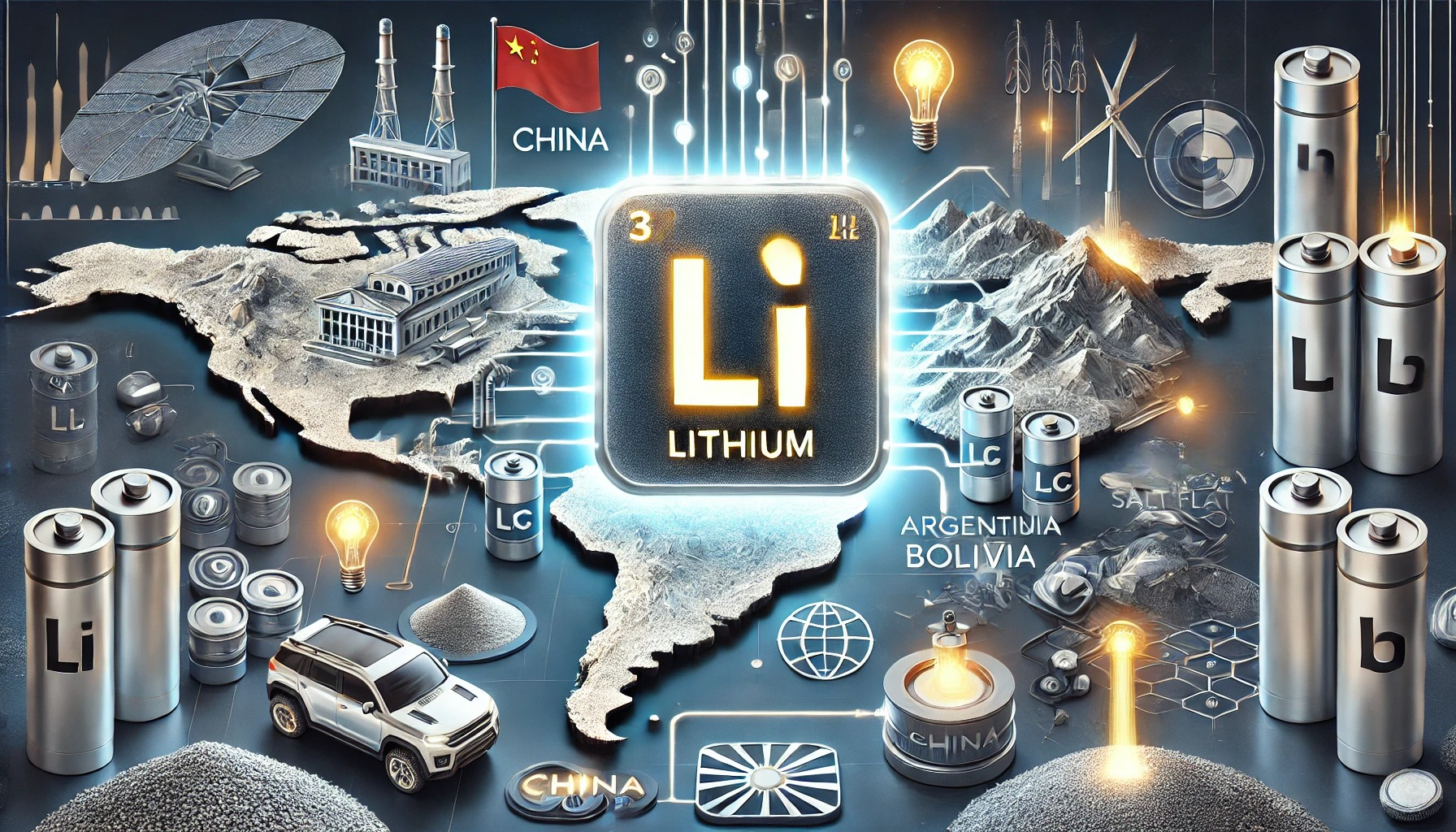Lithium, often dubbed “white gold,” is the lightest metal on Earth and a cornerstone of the global shift toward renewable energy and electric mobility. As demand for clean energy technologies surges, lithium has become one of the most sought-after resources of the 21st century. In this comprehensive guide, we explore how lithium is produced, where it’s mined, and its diverse applications powering modern life.
Lithium: Production & Consumption Trends
- Global lithium production (excluding U.S.) rose 23% in 2023 to 180,000 tons, up from 146,000 tons in 2022.
- Global lithium consumption reached 180,000 tons, a 27% increase from 142,000 tons in 2022.
- Concerns over short-term oversupply, expiration of Chinese EV subsidies, and weaker EV sales led to a sharp price decline.
Lithium Production: How Is Lithium Extracted?
Lithium is primarily extracted from two sources: brine deposits and hard rock minerals. Each method has unique processes and challenges.
1. Brine Extraction
- Process: Saltwater brine (found in salt flats or salars) is pumped into evaporation ponds. Over 12–18 months, sunlight and wind evaporate water, leaving a concentrated lithium solution. This is then processed into lithium carbonate or lithium hydroxide.
- Key Regions: Chile’s Atacama Desert, Argentina’s Hombre Muerto, and Bolivia’s Uyuni Salt Flat.
- Advantages: Lower operational costs and energy use compared to hard rock mining.
- Challenges: Water-intensive and environmentally disruptive to local ecosystems.
2. Hard Rock Mining
- Process: Lithium-rich minerals like spodumene are mined from open-pit operations. The ore is crushed, roasted, and chemically treated to extract lithium.
- Key Regions: Australia’s Greenbushes Mine (the world’s largest), Canada, and China.
- Advantages: Faster production timelines and higher purity output.
- Challenges: Energy-intensive and generates significant waste.
3. Emerging Methods
- Direct Lithium Extraction (DLE): A newer technology using adsorption, ion exchange, or solvent extraction to pull lithium from brine more efficiently.
- Lithium Recycling: Recovering lithium from spent batteries is gaining traction to reduce reliance on mining.
Top Lithium-Producing Countries and Mines
Global lithium production is dominated by a handful of countries. Here are the key players and their major mines:
Global Lithium Resources (Estimated at 105 Million Tons) (USGS)
- Bolivia: 23 million tons.
- Argentina: 22 million tons.
- Chile: 11 million tons.
- Australia: 8.7 million tons.
- China: 6.8 million tons.
- Germany: 3.8 million tons.
- Canada: 3 million tons.
- Congo (Kinshasa): 3 million tons.
- Mexico: 1.7 million tons.
Major Lithium-Producing Countries (2023 Estimates) (USGS)
- Australia: 86,000 tons (largest producer).
- Chile: 44,000 tons.
- China: 33,000 tons.
- Argentina: 9,600 tons.
- Brazil: 4,900 tons.
- Canada: 3,400 tons.
- Zimbabwe: 3,400 tons.
- Portugal: 380 tons.
Lithium Exploration & Development
- Brine-based lithium sources are under development in Argentina, Bolivia, Chile, China, Canada, and the U.S.
- Mineral-based lithium sources are being explored in Australia, Brazil, China, Congo, Ethiopia, Germany, Ghana, India, Iran, Kazakhstan, Mali, Namibia, Nigeria, Peru, Russia, Serbia, Spain, Thailand, Turkey, the U.S., and Zimbabwe.
- Lithium-clay sources are under development in Mexico and the U.S.
Top 10 Largest Lithium Mines Worldwide by Production in 2023 (Mining-Technology)

Applications of Lithium: Powering Modern Technology
Lithium’s unique properties—high electrochemical potential, low weight, and energy density—make it indispensable across industries:
1. Lithium-Ion Batteries
- Electric Vehicles (EVs): Lithium batteries power 90% of EVs, with Tesla, BYD, and others driving demand.
- Consumer Electronics: Smartphones, laptops, and tablets rely on lithium for lightweight, rechargeable power.
- Energy Storage Systems (ESS): Grid-scale batteries store solar and wind energy, enabling renewable energy adoption.
2. Industrial Uses
- Glass & Ceramics: Lithium lowers melting points and improves durability in heat-resistant glass (e.g., Pyrex).
- Greases & Lubricants: Lithium-based greases withstand extreme temperatures in automotive and aerospace applications.
- Aluminum Production: Lowers energy use in smelting.
3. Pharmaceuticals
- Mental Health: Lithium carbonate treats bipolar disorder by stabilizing mood swings.
4. Nuclear Fusion
- Future Potential: Lithium may play a role in tritium production for experimental fusion reactors.
Challenges in Lithium Production
1. Environmental Concerns
- Water Usage: Brine extraction in arid regions depletes freshwater resources, harming local communities (e.g., Chile’s Atacama Desert).
- Chemical Pollution: Hard-rock mining releases toxic tailings if not managed properly.
2. Geopolitical Tensions
- Supply Chain Risks: China dominates lithium processing (65% of global capacity), raising concerns about over-reliance.
- Resource Nationalism: Countries like Chile and Mexico are moving to nationalize lithium reserves.
3. Market Volatility
- Price Swings: Lithium prices fluctuated from 6,000/metric ton in 2020 to 80,000 in 2022, impacting EV affordability.
The Future of Lithium
- Sustainable Mining: Companies are adopting DLE and renewable energy to reduce environmental footprints.
- Recycling Boom: By 2030, recycled lithium could meet 10% of demand, per the International Energy Agency (IEA).
- New Discoveries: Exploration in untapped regions like Zimbabwe, Canada, and the U.S. aims to diversify supply.
Lithium is the backbone of the clean energy transition, powering everything from EVs to solar farms. However, balancing its production with environmental stewardship and ethical practices remains critical. As innovation in extraction and recycling accelerates, lithium will continue to shape a greener, more sustainable future.

